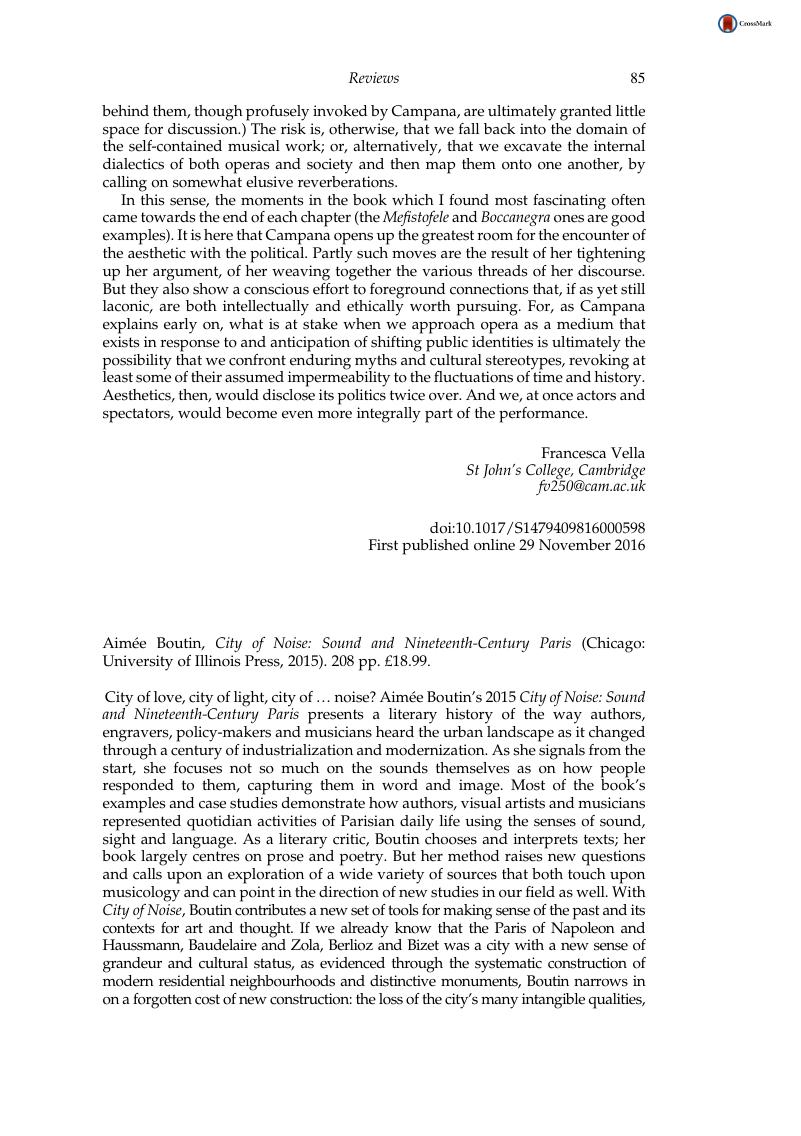No CrossRef data available.
Article contents
Aimée Boutin, City of Noise: Sound and Nineteenth-Century Paris (Chicago: University of Illinois Press, 2015). 208 pp. £18.99.
Review products
Published online by Cambridge University Press: 06 February 2017
Abstract

- Type
- Book Reviews
- Information
- Copyright
- © Cambridge University Press 2017
References
1 Corbin, Alain, Village Bells: Sound and Meaning in the Nineteenth-Century French Countryside (New York: Columbia University Press, 1998)Google Scholar.
2 Boutin, Aimée, ‘Aural flânerie’, in ‘Rethinking the Flâneur: Flânerie and the Senses’, ed. Aimée Boutin, special issue, Dix-Neuf: Journal of the Society of Dix-Neuviémistes 16/2 (2012): 149–161CrossRefGoogle Scholar.
3 See Schafer, Murray, The Soundscape: Our Sonic Environment and the Tuning of the World (Rochester: Destiny Books, 1994)Google Scholar and Sterne, Jonathan, The Audible Past: Cultural Origins of Sound Reproduction (Durham, NC: Duke University Press, 2003)CrossRefGoogle Scholar. See also an excellent review of the latter, with (somewhat dated) concerns about sound studies as a discipline: Hilmes, Michele, ‘Is there a Field Called Sound Culture Studies? And Does It Matter?’ American Quarterly 57/1 (2005): 249–259CrossRefGoogle Scholar.
4 Attali, Jacques, Noise: The Political Economy of Music (Minneapolis: University of Minnesota Press, 1985)Google Scholar.
5 Boutin defines charivari as a ‘custom … that subjected offenders to rough music and a means of public derision and chastisement. A group of young people would assemble to serenade by loud noise-making: banging pots and pans, blowing horns, shaking rattles and bells, and shouting cries and insults. A well-established plebeian right, the ritual was used by the community (especially its youth) for its own self-regulation outside a bureaucratized justice system’ (p. 29).





